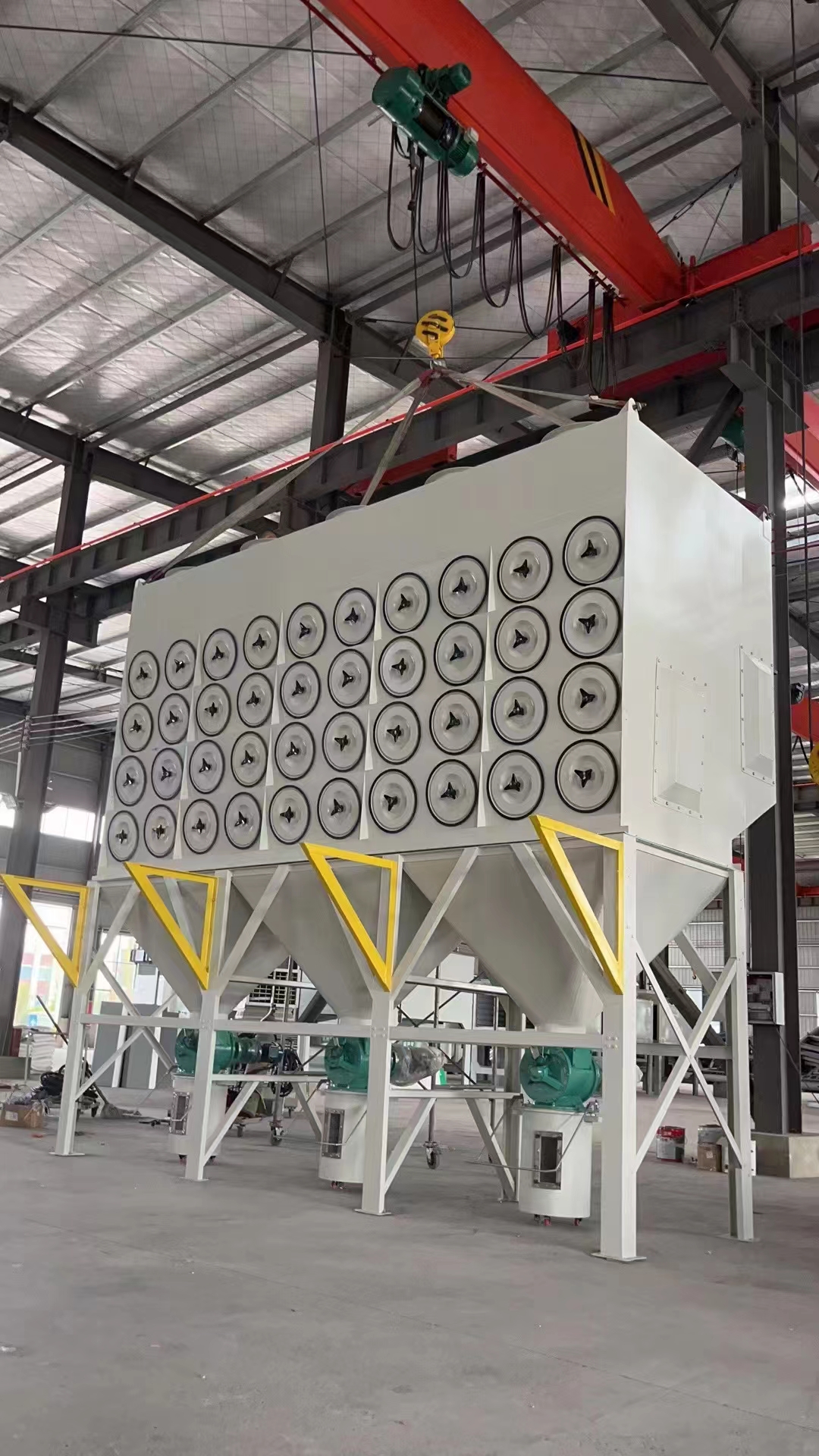- English
- Español
- Português
- русский
- Français
- 日本語
- Deutsch
- tiếng Việt
- Italiano
- Nederlands
- ภาษาไทย
- Polski
- 한국어
- Svenska
- magyar
- Malay
- বাংলা ভাষার
- Dansk
- Suomi
- हिन्दी
- Pilipino
- Türkçe
- Gaeilge
- العربية
- Indonesia
- Norsk
- تمل
- český
- ελληνικά
- український
- Javanese
- فارسی
- தமிழ்
- తెలుగు
- नेपाली
- Burmese
- български
- ລາວ
- Latine
- Қазақша
- Euskal
- Azərbaycan
- Slovenský jazyk
- Македонски
- Lietuvos
- Eesti Keel
- Română
- Slovenski
- मराठी
- Srpski језик
What are the types, advantages and disadvantages of industrial dust collectors?
2024-07-12
Dust collector is a device that separates dust from dust-containing gas and is widely used in industrial production. The following are some common types of industrial dust collectors and their advantages and disadvantages:
1. Electrostatic dust collector:
- Advantages: High dust removal efficiency, low energy consumption, suitable for removing 0.01-50μm dust in flue gas, can be used in places with high flue gas temperature and high pressure; the larger the amount of flue gas treated, the more economical the investment and operating costs.
- Disadvantages: Large equipment investment, complex structure, large floor space, strict requirements for operation, operation, maintenance and management, dust cleaning will cause dust to fly again, and there are also requirements for dust resistance ratio.
- Advantages: High dust removal efficiency, can remove fine dust particles, strong adaptability to changes in the amount of gas treated, a large range of dust particle sizes that can be captured, simple structure, and stable operation.
- Disadvantages: High investment cost, low allowable operating temperature, the gas temperature during operation must be higher than the dew point temperature, otherwise it will increase the resistance of the dust collector, and even make the dust collector unable to work normally; bag dust collectors cannot be used when the dust concentration exceeds the lower explosion limit of dust particles; bags are easily damaged, and cleaning will cause dust to fly again.
3. Cyclone dust collector:
- Advantages: Low cost, convenient maintenance and management, especially suitable for collecting high-temperature and high-humidity flue gas and corrosive gas.
- Disadvantages: The removal rate of dust particles with a particle size below 10um is low. When the dust concentration in the gas is high, this type of dust collector can be used as primary dust removal to reduce the load of secondary dust removal.
4. Wet dust collector:
- Advantages: Relatively low manufacturing cost, water is used as the dust removal medium, and the dust removal efficiency can generally reach more than 95%. It is an ideal dust removal method for dust with moisture, stickiness and irritating odor generated by chemical, paint, glaze, pigment and other industries.
- Disadvantages: high energy consumption, large water consumption, mud and wastewater need to be treated, equipment is prone to corrosion; in cold areas, attention should be paid to antifreeze, and when processing high-temperature flue gas, white smoke will be formed, which is not conducive to diffusion.
5. Desulfurization and dust collector:
- Advantages: It can effectively remove harmful gases such as sulfur dioxide in flue gas, has high dust removal and desulfurization efficiency, and is suitable for boilers and kilns that emit smoke.
- Disadvantages: The equipment is large in size and has high installation and maintenance costs.
Different types of industrial dust collectors differ in dust removal efficiency, scope of application, operating costs, etc. When selecting a dust collector, it is necessary to comprehensively consider factors such as specific industrial production needs, dust properties, and emission standards to ensure that a suitable dust collector is selected to achieve effective dust control and environmental protection.





